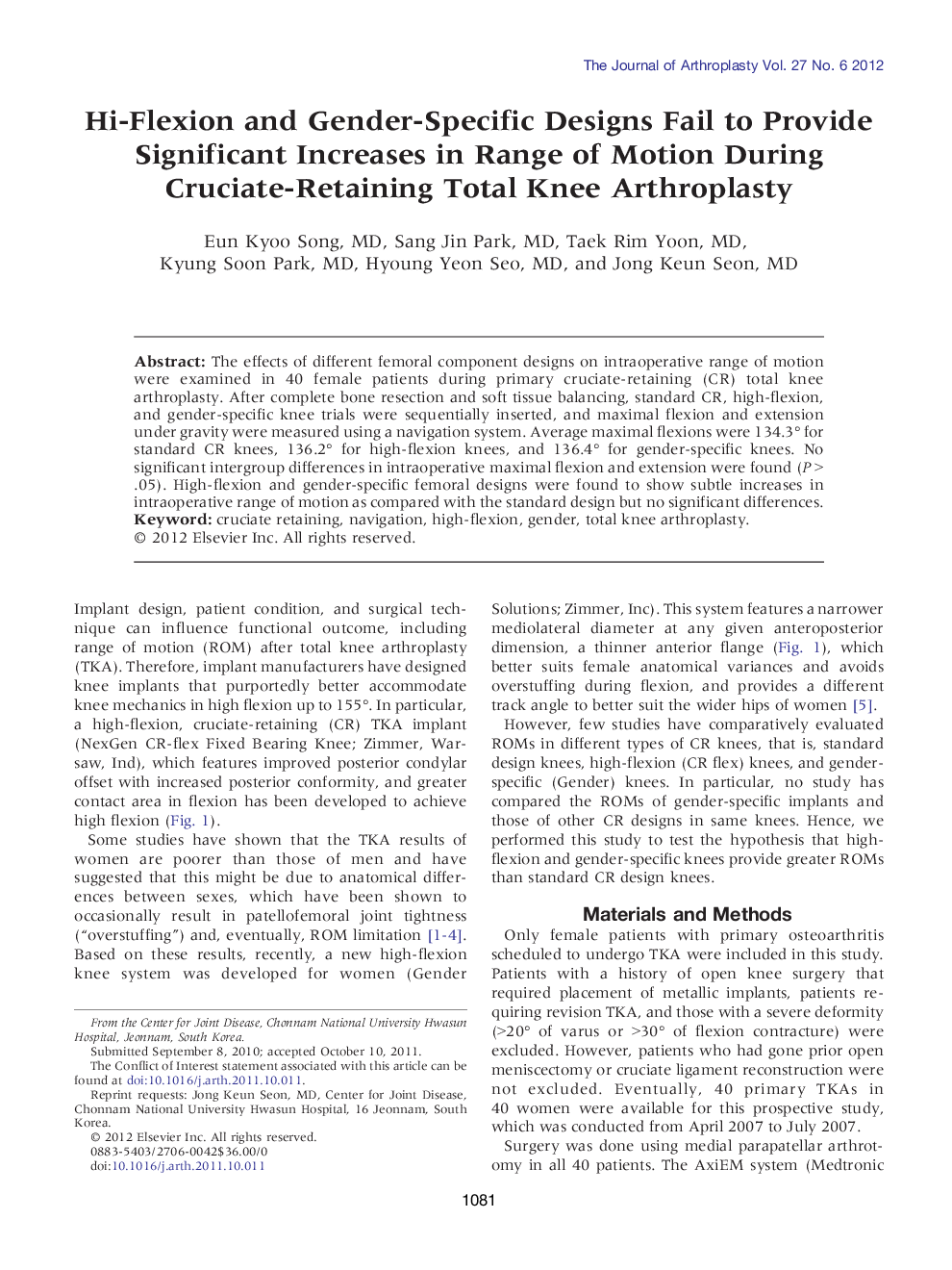| Article ID | Journal | Published Year | Pages | File Type |
|---|---|---|---|---|
| 4061024 | The Journal of Arthroplasty | 2012 | 4 Pages |
The effects of different femoral component designs on intraoperative range of motion were examined in 40 female patients during primary cruciate-retaining (CR) total knee arthroplasty. After complete bone resection and soft tissue balancing, standard CR, high-flexion, and gender-specific knee trials were sequentially inserted, and maximal flexion and extension under gravity were measured using a navigation system. Average maximal flexions were 134.3° for standard CR knees, 136.2° for high-flexion knees, and 136.4° for gender-specific knees. No significant intergroup differences in intraoperative maximal flexion and extension were found (P > .05). High-flexion and gender-specific femoral designs were found to show subtle increases in intraoperative range of motion as compared with the standard design but no significant differences.
